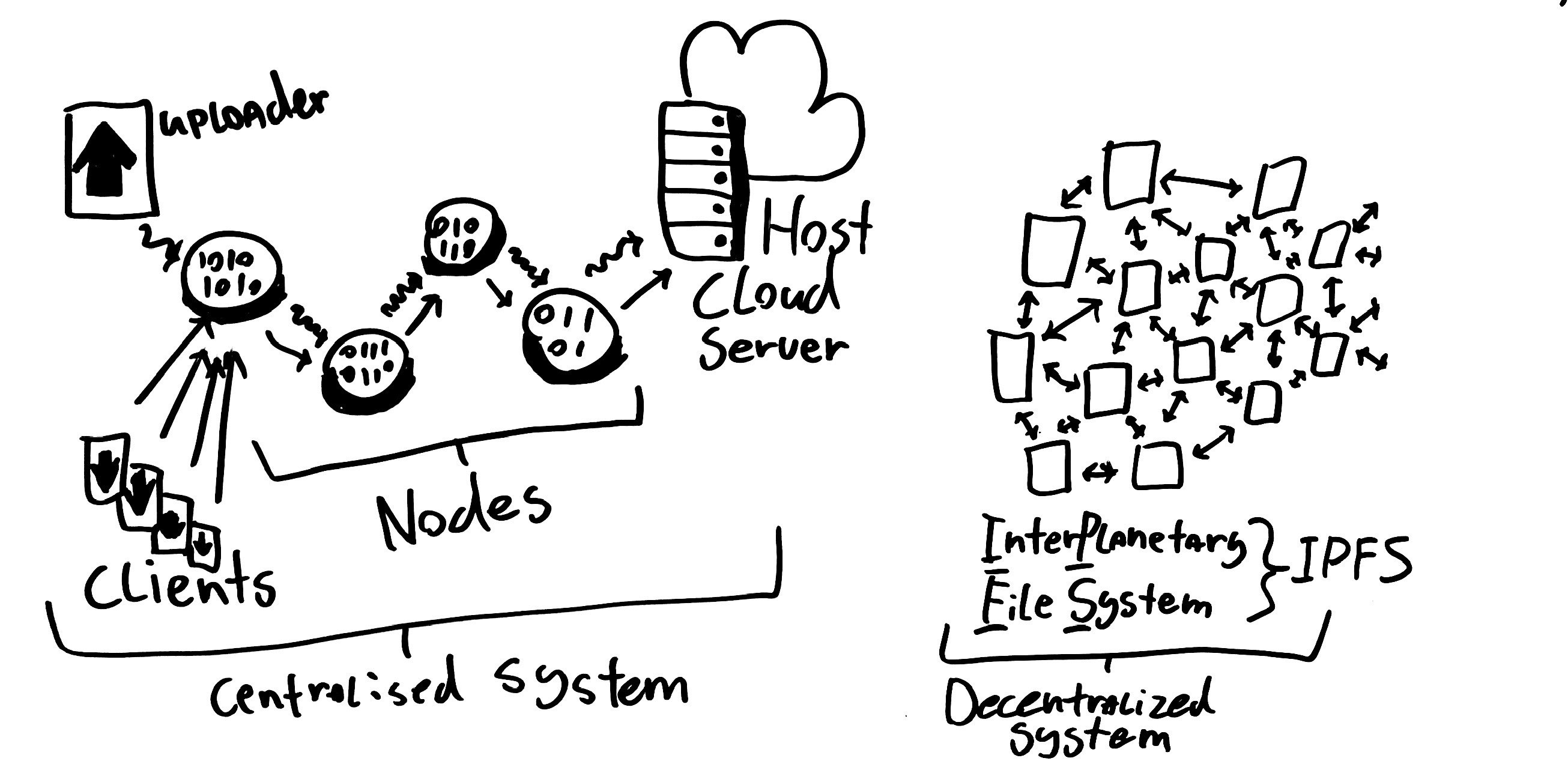The Comprehensive Narrative of Reverse: 1999: A Temporal Odyssey Through Conflict and Survival
NOTE: This is based on all sources and my own experience playing Reverse: 1999. It might not be up to date.
Table of Contents
- Table of Contents
- 1. Introduction
- 2. The Storm and Its Temporal Mechanics
- 3. Key Factions
- 4. Vertin: The Immune Timekeeper
- 5. Chapter Highlights
- 6. Themes and Symbolism
- 7. Conclusion: A Storm Without End
- 8. Community Theories & Extended Timeline
- 9. Open Questions and Theoretical Speculations
- 10. Sources
1. Introduction
Reverse: 1999 unfolds as a labyrinthine chronicle where time itself unravels. At the heart of the narrative lies “The Storm” – a phenomenon that intermittently reverses select regions and years, shattering the conventional flow of time. The storyline follows Vertin, a uniquely immune Arcanist, whose journey through these temporal anomalies challenges our notions of survival, morality, and identity in a world where tomorrow is perpetually lost to yesterday.
This is a somewhat comprehensive overview about the in-game lore, and theoretical discussions to offer newcomers a clear yet detailed understanding of the game’s narrative framework.
2. The Storm and Its Temporal Mechanics
2.1 Origins and Effects
- First Known Occurrence: The Storm is triggered at 23:59 on December 31, 1999, rewinding parts of the modern world to 1996.
- Reversal Process: When the Storm strikes, it selectively envelopes certain locales—rewinding them to a previous era while sparing others.
- Bizarre Phenomena: Witnesses report raindrops defying gravity, entire populations vanishing, and modern structures morphing into their historical antecedents.
- Survivor Categories:
- Arcanists: Possessing innate magical abilities, many avoid reversal when sheltered (for instance, within the “suitcase” dimension).
- Humans: Typically vulnerable unless safeguarded by structures like the St. Pavlov Foundation’s headquarters.
- Psychological Impact: Some accounts even mention”Storm Syndrome” hallucinations that mirror the prevailing fears of the era (such as economic collapse), underscoring how social chaos amplifies the Storm’s effects.
2.2 Timeline of Major Storms
Community and developer logs suggest that by the start of Chapter 5, there have been eight major Storm events:
1st Storm (1999 → 1996)
- Occurring as the millennium turned, it sets the stage for a world unmoored from its natural timeline.2nd Storm (1996 → 1985) [Original Year ~2000]
- This event displaces mid-1990s society back to the mid-80s, creating further temporal dislocation.3rd Storm (1987 → 1976) [Original Year ~2003]
- Crucial for Vertin’s origin, this is when the 12-year-old future Timekeeper first witnesses the Storm firsthand.4th Storm (~1976 → 1930s) [Original Year ~2004]
- Illustrates the non-linear leaps of the Storm, abruptly jumping survivors from the 70s to the 30s.5th Storm (~1930s → 1912) [Original Year ~2006]
- Occurring during the Depression era, this reversal pushes the narrative further back into early 20th-century history.6th Storm (~1912 → 1966) [Original Year ~2007]
- Sets the backdrop for the prologue, where pivotal characters such as Regulus and APPLe are introduced.7th Storm (1966 → 1929) [Original Year ~2007]
- Transitions the narrative into the Jazz Age, bridging modernity and a bygone era.8th Storm (1929 → ~1913) [Original Year ~2007]
- Propels the storyline toward a pre-World War I Europe, further complicating the survivors’ grasp on history.
3. Key Factions
3.1 St. Pavlov Foundation
This organization is dedicated to protecting humanity from the chaotic repercussions of the Storm.
- Control Through Preservation: The Foundation safeguards Arcanists (such as Vertin) and diligently researches the Storm’s mechanics.
- Ethical Complexity: Despite its noble mission, there are accounts of the Foundation conducting ruthless experiments, raising moral ambiguities about its true intentions.
3.2 Manus Vindictae
A radical faction led by the enigmatic Arcana, Manus Vindictae seeks to exploit the Storm to overthrow human dominance.
- History Manipulation: They intentionally incite disasters (for instance, exacerbating the 1929 financial collapse) to trigger earlier Storms.
- Cult-like Devotion: Operatives engage in extreme rituals, convinced that the eradication of “the weak” will usher in a new era of Arcanist supremacy.
These opposing forces vie not only for control over time’s flow but also for the ideological future of society itself.
4. Vertin: The Immune Timekeeper
At the centre of the narrative stands Vertin, a 16-year-old Arcanist with an anomaly: immunity to the Storm’s otherwise fatal effects.
- Traumatic Origins: Vertin’s immunity was discovered during a catastrophic Storm experiment where her classmates perished. Her survival earmarked her as invaluable to the St. Pavlov Foundation.
- Unique Mission: Tasked with journeying across reversed eras, Vertin documents lost histories and seeks to uncover the mystery behind the Storm, all while navigating the competing agendas of Foundation and Manus.
- The Suitcase Dimension: Her portable “suitcase” serves as a personal sanctuary, an extradimensional space that shields her (and, in some cases, other Arcanists) from temporal reversal.
5. Chapter Highlights
5.1 Prologue (Chapter 0): 1966 – Pirates and Peril
- Regulus & APPLe: Introduced as a pirate radio host and her sentient contraption, they come under Manus Vindictae’s attack.
- Foundation Intervention: Vertin and Sonetto’s timely arrival and the protective power of the suitcase set the tone for the unfolding conflict.
- Temporal Transition: The 7th Storm then drags the 1966 setting back to 1929, ushering in the game’s earliest playable arcs.
5.2 Chapter 1 & 2: 1929 → 1913 – Jazz Age Turmoil
- Economic and Social Upheaval: The 1929 crash intensifies tensions, with Manus Vindictae using the era’s chaos to trigger further temporal reversals.
- Notable Characters: Figures like Schneider, an Italian-American mobster, underscore the moral and allegiances complexities within this turbulent time.
- Emotional Fallout: The abrupt jump from 1929 to ~1913 leaves characters grappling with losses and dislocated identities.
5.3 Chapter 3 & Interlude: Flashbacks to 1987–1976
- Vertin’s Formative Years: At 12, she experiences the full horror of the Storm firsthand an event that cements her role as Timekeeper.
- Foundation’s Secrets: Delving into the covert practices and experiments of the Foundation, this chapter reveals how the organization exploits temporal anomalies.
- Manus Captives: Captured members of Manus Vindictae divulge clues about future Storms and the organization’s secret methods.
5.4 Chapter 4 & 5: 1913 → 1914 – Aegean Mysteries
- A Greek Island Enigma: Vertin’s team encounters locals who reference an “outside” timeline (2007), highlighting the fractured nature of time.
- Cult of Numbers: A mysterious group fixated on numerical patterns suggests esoteric methods of forecasting the Storm.
- Clash of Factions: An uneasy truce emerges amid escalating tensions between Manus Vindictae and the Foundation, setting the stage for the coming historical conflagration as the narrative edges toward 1914.
6. Themes and Symbolism
6.1 Identity and Discrimination
The plight of the Arcanists echoes real-world experiences of marginalization.
- Institutionalized Othering: Both the Foundation and Manus use the Arcanist identity as a lever, either to control or to empower.
- Internal Conflict: Characters like Schneider navigate dual allegiances, reflecting the broader societal struggle of being “different” in a hostile world.
6.2 Temporal Fragmentation and Trauma
The recurrent reversal of time shatters historical continuity, forcing survivors to confront multiple, often conflicting, versions of their past.
- Symbolic Artifacts: Old photographs and relics serve as reminders of eras erased by the Storm.
- Psychological Scars: Survivors, especially Vertin, carry deep-seated trauma and survivor’s guilt as they piece together their fractured realities.
6.3 Existential Paradoxes
The cyclical violence of the Storm raises questions about fate, free will, and the nature of time itself.
- Looped Causality: The interplay between human actions and the Storm’s unpredictable reversals creates a feedback loop where cause and effect become inextricably entangled.
- Open-Ended Narrative: The unresolved, often ambiguous, conclusions of each chapter invite players to ponder whether true escape from this temporal prison is ever possible.
7. Conclusion: A Storm Without End
Reverse: 1999 challenges conventional understandings of time, identity, and morality. As factions battle for control over a world where every tomorrow is swallowed by yesterday, Vertin emerges as both a beacon of hope and a symbol of inevitable loss. The ongoing struggle between preserving a semblance of order and succumbing to chaotic reversal raises one important question: In a universe where history is endlessly rewritten, can survival ever equate to victory?
8. Community Theories & Extended Timeline
Drawing from in-depth discussions on Reddit and timeline breakdowns by theorists like @staryingx on Tumblr, several key insights emerge:
Dual Temporal Phenomena:
The “Reverse” represents a constant, slow regression, where each new day becomes yesterday while the “Storm” is an abrupt, large-scale time-skip.
For regular humans, this often means a loss of continuity or even complete erasure; for Arcanists, it is a perilous yet familiar cycle.
Factional Ideologies in Flux:
People on sites like reddit.com emphasize that while the Foundation appears to be the “safeguard” of humanity, its methods are steeped in bureaucratic opacity and moral compromise.
In contrast, Manus Vindictae’s fanatical drive to reforge history through radical action underlines the ideological rift that fuels the narrative conflict.
Reconstructed Timeline Recap:
- 1st Storm (1999 → 1996)
- 2nd Storm (1996 → 1985) [Original: ~2000]
- 3rd Storm (1987 → 1976) [Original: ~2003]
- 4th Storm (~1976 → 1930s) [Original: ~2004]
- 5th Storm (~1930s → 1912) [Original: ~2006]
- 6th Storm (~1912 → 1966) [Original: ~2007]
- 7th Storm (1966 → 1929) [Original: ~2007]
- 8th Storm (1929 → ~1913) [Original: ~2007]
These insights highlight the non-linear and unpredictable nature of the Storm, reinforcing the idea that even the most detailed reconstructions leave room for mystery and debate.
9. Open Questions and Theoretical Speculations
The narrative of Reverse: 1999 is intentionally enigmatic, inviting players to theorize and discuss its many unresolved points:
The True Nature of the Storm:
Is the Storm a natural cosmic phenomenon, or could it be a man-made catastrophe? Perhaps even manipulated by factions such as the Foundation? Some community members speculate that hidden agendas might be steering this temporal chaos.Temporal Perception and Survivor Identity:
While humans seem doomed to lose their history or be “reversed” into non-existence, Arcanists experience time in a distorted yet continuous manner. How do these differing perceptions shape identity and memory?The Future of Factional Conflict:
Could Vertin, with her unparalleled immunity, one day break away to form her own faction? One that transcends the conflict between the Foundation and Manus Vindictae? Such a shift might even pave the way for further narrative depth.Existential Implications:
With time being folded back on itself, what does it mean to “progress”? The game raises poignant philosophical questions about fate versus free will, leaving players to question whether survival amid perpetual reversal is truly a victory.
10. Sources
Sources
https://en.wikipedia.org/wiki/Reverse:_1999
https://www.blog.zeusx.com/post/reverse-1999-guide-a-comprehensive-beginner-s-handbook
https://www.androidpolice.com/waited-to-play-reverse-1999-over-a-year-wasnt-worth-it
https://www.reddit.com/r/gachagaming/comments/1377470/reverse_1999_review_a_dark_horse_a_masterpiece
https://www.reddit.com/r/Reverse1999/comments/1ao1xmh/reverse_1999_story_timeline
https://www.gachaguru.com/reverse-1999/beginners-guide-to-progress-faster
https://www.escapistmagazine.com/what-is-reverse-1999-about
https://www.reddit.com/r/Reverse1999/comments/17jkgjo/reverse_1999_story_explanation
https://www.pockettactics.com/reverse-1999/review
https://www.taptap.io/post/6523769
https://vulcanpost.com/843662/reverse-1999-rpg-game-review-gameplay-characters-plot-malaysia
https://www.reddit.com/r/Reverse1999/comments/1bcsfhc/the_best_way_to_describe_reverse_1999_story
https://gamerant.com/reverse-1999-all-current-next-past-banners
https://www.talkandroid.com/43030-reverse-1999-visionary-insights
https://www.playnforge.com/reverse-1999-review
https://www.pocketgamer.com/reverse-1999-rpg/the-team-behind-the-hit-gacha-game-reveals-all
https://www.gamespace.com/all-articles/news/reverse-1999-version-2-2-available-now
https://www.facebook.com/reverse1999global/posts/new-theme-pack-for-wilderness-west-by-southwest-life-is-filled-with-celebrations/445684915255697
https://www.facebook.com/reverse1999global/posts/reverse-1999-version-22-tristes-tropiques-is-now-available-this-is-a-land-of-vio/472429719247883
https://www.reddit.com/r/Reverse1999/comments/1gw5fku/reverse_1999_what_happened
https://www.reddit.com/r/Reverse1999/comments/1fq9k5k/afflatus_lore_theory
https://www.zleague.gg/theportal/islandxd-islandxd-dives-deep-into-the-secret-lore-of-reverse-1999s-latest-event
https://www.zleague.gg/theportal/islandxd-exploring-the-intriguing-lore-of-characters-in-reverse-1999
https://www.reddit.com/r/Reverse1999/comments/1gjcdii/all_events_complete_timeline
https://www.reddit.com/r/Reverse1999/new
https://www.gachaguru.com/reverse-1999/understanding-the-combat-system
https://www.timetoast.com/timelines/reverse-1999-2-0-timeline
https://www.facebook.com/DinlasGN/posts/save-your-timeline-in-reverse-1999-before-chaos-ensues/824708436327110
https://www.gachaguru.com/reverse-1999/understanding-the-pity-system
https://www.zleague.gg/theportal/islandxd-the-significance-of-vertin-in-reverse-1999
https://blog.prydwen.gg/2024/09/07/reverse-1999-cn-patch-2-2-overview
https://toucharcade.com/2023/10/26/reverse-1999-why-you-should-play-this-stunning-rpg-where-time-flows-backwards
https://www.reddit.com/r/Reverse1999/comments/1b8mdmr/theories
https://ad.dlh.net/en/news/80077/the-song-the-seance-the-culture-and-story-behind-reverse-1999-s
https://www.zleague.gg/theportal/islandxd-exploring-the-hidden-lore-in-character-designs-of-reverse-1999
https://www.reddit.com/r/Reverse1999/comments/1i68nc9/an_analysis_on_the_story_of_reverse_1999_and/?tl=de
YouTube Videos
https://www.youtube.com/watch?v=pTrSoEmilNA
https://www.youtube.com/watch?v=SYWHoNfT8XE
https://www.youtube.com/watch?v=O_Zwqug5qRM
https://www.youtube.com/watch?v=8Pew0tx_wXU
https://www.youtube.com/watch?v=9pMm3RIqqE8
https://www.youtube.com/watch?v=6QELKBdSkXk
https://www.youtube.com/watch?v=Dc0-okGyQbc
https://www.youtube.com/watch?v=Jlb4DKQe7CE
https://www.youtube.com/watch?v=MgmpxatU6lA
https://www.youtube.com/watch?v=AOgnS88Iozg
https://www.youtube.com/watch?v=FK-nq8GUnpA
https://www.youtube.com/live/6QELKBdSkXk
https://www.youtube.com/watch?v=Jlb4DKQe7CE
https://www.youtube.com/watch?v=MgmpxatU6lA
https://www.youtube.com/watch?v=UaxAcpzRzoM
https://www.youtube.com/watch?v=QZrPcEb6RUE
https://www.youtube.com/watch?v=d2rVs1KwFVk
https://www.youtube.com/watch?v=71Y9c3DlYLo
https://www.youtube.com/watch?v=BUPPFtGK0no
https://www.youtube.com/watch?v=h7DrjVRF4vQ
https://www.youtube.com/watch?v=5E9SEsS_RJs
https://www.youtube.com/watch?v=BWY3LmmbBWc
https://www.youtube.com/watch?v=eqm0UaRoP2c
https://www.youtube.com/watch?v=_IXdZsAsuAc
https://www.youtube.com/watch?v=ElbGdzLTrAg
https://www.youtube.com/watch?v=8Pew0tx_wXU
https://www.youtube.com/watch?v=9pMm3RIqqE8
https://www.youtube.com/watch?v=6QELKBdSkXk
https://www.youtube.com/watch?v=Dc0-okGyQbc
https://www.youtube.com/watch?v=FK-nq8GUnpA
https://www.youtube.com/watch?v=Jlb4DKQe7CE
https://www.youtube.com/watch?v=MgmpxatU6lA
https://www.youtube.com/watch?v=UaxAcpzRzoM
https://www.youtube.com/watch?v=QZrPcEb6RUE
https://www.youtube.com/watch?v=d2rVs1KwFVk
https://www.youtube.com/watch?v=71Y9c3DlYLo
https://www.youtube.com/watch?v=BUPPFtGK0no
https://www.youtube.com/watch?v=h7DrjVRF4vQ
https://www.youtube.com/watch?v=5E9SEsS_RJs
https://www.youtube.com/watch?v=BWY3LmmbBWc
https://www.youtube.com/watch?v=eqm0UaRoP2c
https://www.youtube.com/watch?v=_IXdZsAsuAc
https://www.youtube.com/watch?v=ElbGdzLTrAg
https://www.youtube.com/watch?v=8Pew0tx_wXU
https://www.youtube.com/watch?v=9pMm3RIqqE8
https://www.youtube.com/watch?v=6QELKBdSkXk
https://www.youtube.com/watch?v=Dc0-okGyQbc
https://www.youtube.com/watch?v=FK-nq8GUnpA
https://www.youtube.com/watch?v=Jlb4DKQe7CE
https://www.youtube.com/watch?v=MgmpxatU6lA
https://www.youtube.com/watch?v=UaxAcpzRzoM
https://www.youtube.com/watch?v=QZrPcEb6RUE
https://www.youtube.com/watch?v=d2rVs1KwFVk
https://www.youtube.com/watch?v=71Y9c3DlYLo
https://www.youtube.com/watch?v=BUPPFtGK0no
https://www.youtube.com/watch?v=h7DrjVRF4vQ
https://www.youtube.com/watch?v=5E9SEsS_RJs
https://www.youtube.com/watch?v=BWY3LmmbBWc
https://www.youtube.com/watch?v=eqm0UaRoP2c
https://www.youtube.com/watch?v=_IXdZsAsuAc
https://www.youtube.com/watch?v=ElbGdzLTrAg
https://www.youtube.com/watch?v=tKXOgDE3BvE
https://www.youtube.com/watch?v=AOgnS88Iozg
https://www.youtube.com/watch?v=vulMnWPhZhE
https://www.youtube.com/watch?v=FK-nq8GUnpA
https://www.youtube.com/watch?v=QZrPcEb6RUE
https://www.youtube.com/watch?v=UaxAcpzRzoM
https://www.youtube.com/watch?v=5E9SEsS_RJs
https://www.youtube.com/watch?v=eqm0UaRoP2c
https://www.youtube.com/watch?v=_IXdZsAsuAc
https://www.youtube.com/watch?v=ElbGdzLTrAg
https://www.youtube.com/watch?v=BWY3LmmbBWc
https://www.youtube.com/watch?v=d2rVs1KwFVk
https://www.youtube.com/watch?v=71Y9c3DlYLo
https://www.youtube.com/watch?v=BUPPFtGK0no
https://www.youtube.com/watch?v=h7DrjVRF4vQ


